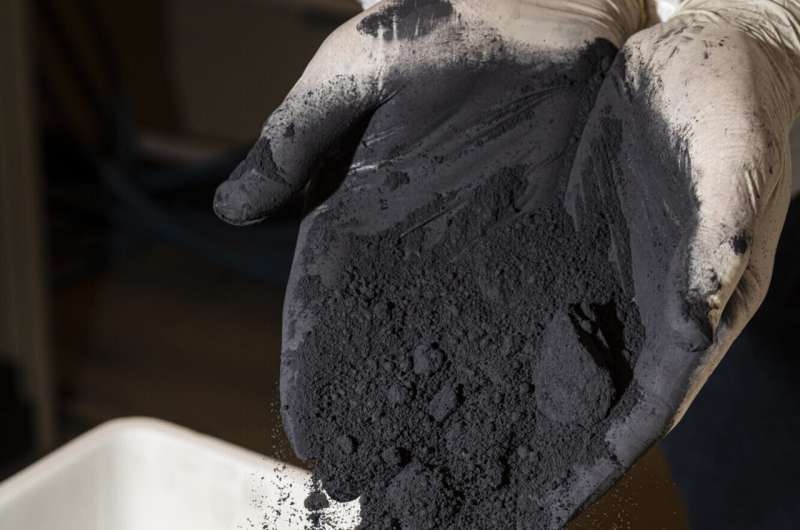New solar panels from waste solar panels
- November 29, 2022
- 0
Solar power is good news for planet Earth, but solar panels are not as climate-friendly as they should be. Researcher Martin Bellmann uses what he calls the “black
Solar power is good news for planet Earth, but solar panels are not as climate-friendly as they should be. Researcher Martin Bellmann uses what he calls the “black

Solar power is good news for planet Earth, but solar panels are not as climate-friendly as they should be. Researcher Martin Bellmann uses what he calls the “black gold” of solar panel manufacturing waste to make new panels. Solar energy is clean energy. Pure and simple. But things start to get complicated when it comes to acquiring the raw materials needed to make solar panels. Not only does most of this raw material come from China, but a third of the material is lost in the manufacturing process.
“But it is possible to recover this material as part of the manufacturing process,” says Martin Bellmann. “And maybe that will allow us to create a new solar industry in Europe,” he says. Bellmann is a senior business developer at SINTEF Industry and oversees an international solar panel project called Icarus. Today, solar panels account for 60% of global renewable energy growth.
from quartz to crystalline silicon
Bellmann explains how solar panels started with the quartz mineral used to produce ultrapure silicon. First, silicon is melted in a crucible and a silicon crystal or ingot is extracted.
“The ingot slowly pulls the silicon out of the crucible, forming a kind of cylinder that grows and grows,” says Bellmann. “It’s cut to form a square block, which is then cut into thin slices, or wafers, as the researchers call it,” he says.
A typical sheet is only 0.13 millimeters (13 micrometers) thick, and these are the sheets used to make solar panels.
However, as a result of all these saws, a large amount of “chips” is formed. It’s like cutting a wooden board – some of the wood is lost in the form of sawdust. The same thing happens when you cut a silicon ingot, even if you use fine diamond wires. Some of the material will always be lost as “silicone powder”.
Saw waste 35%
“We lose 35% of the silicon as black powder,” Bellmann says.
It is this powder, which he calls the new black gold, that the researchers are trying to exploit.
“We’re throwing that dust away today,” Bellmann says. “What the Icarus project is doing is primarily looking for ways to bring dust back into the value chain and use it to make silicon crystals and solar panels,” he says.
The dust is collected in a liquid sludge mixture that also contains contaminants from the atomization process such as oxygen, carbon, nickel, iron and aluminum.
“Silicone contaminated with these metals is not suitable for making solar panels,” Bellman says.
That’s why it’s working with partners on the Icarus project to find ways to purify silicon dust so it can be recycled as a raw material for new solar panels. What we think of as waste today can be used in other products, such as electric car batteries. Several partners are experimenting with different ways of separating the silicone from the contaminated mix.
Pan-European project
Of course, the aim is to better use raw materials that are good for the environment and climate. But it is also a stated target that Europe needs to achieve greater self-sufficiency.
“The European solar sector used to be bigger than it is now, but everything has moved to China,” says Bellmann. “Today we are heavily dependent on raw materials from Asia, and silicon is no exception. We plan to use silicon powder to reduce our dependence on China,” he said. Bellmann hopes that the Icarus research project will likely be the basis for a new industry in Norway as well. Norwegian energy is clean and this is a huge advantage in this context.
Silicon processing, etc.
One advantage of the Icarus project is that the researchers plan to recycle the quartz crucibles used to melt the silicon before it is converted into crystals.
“The crucibles break as they cool in the smelting furnace,” says Bellman. “Every time you melt quartz, you have to buy a new crucible and discard the old one. Our goal is to use it as a raw material in the production of silicon carbide,” he says.
Silicon carbide is especially used in the electronics industry, and electric vehicles are just one of many products containing this material.
“We normally use high purity quartz to make silicon carbide, but it’s very expensive,” says Bellmann. “Our idea is that you can replace high-purity quartz with crucible waste, which is essentially very high-purity quartz,” he says.
The Icarus project is also considering the possibility of recycling graphite waste as a raw material specifically for use in batteries.
“High purity graphite is also discarded,” says Bellmann. “It is used in furnaces where silicon crystals are removed, but it has to be changed from time to time as it loses its properties. Now the Icarus project is working with graphite waste to recycle,” says the source.
Source: Port Altele
I’m Maurice Knox, a professional news writer with a focus on science. I work for Div Bracket. My articles cover everything from the latest scientific breakthroughs to advances in technology and medicine. I have a passion for understanding the world around us and helping people stay informed about important developments in science and beyond.